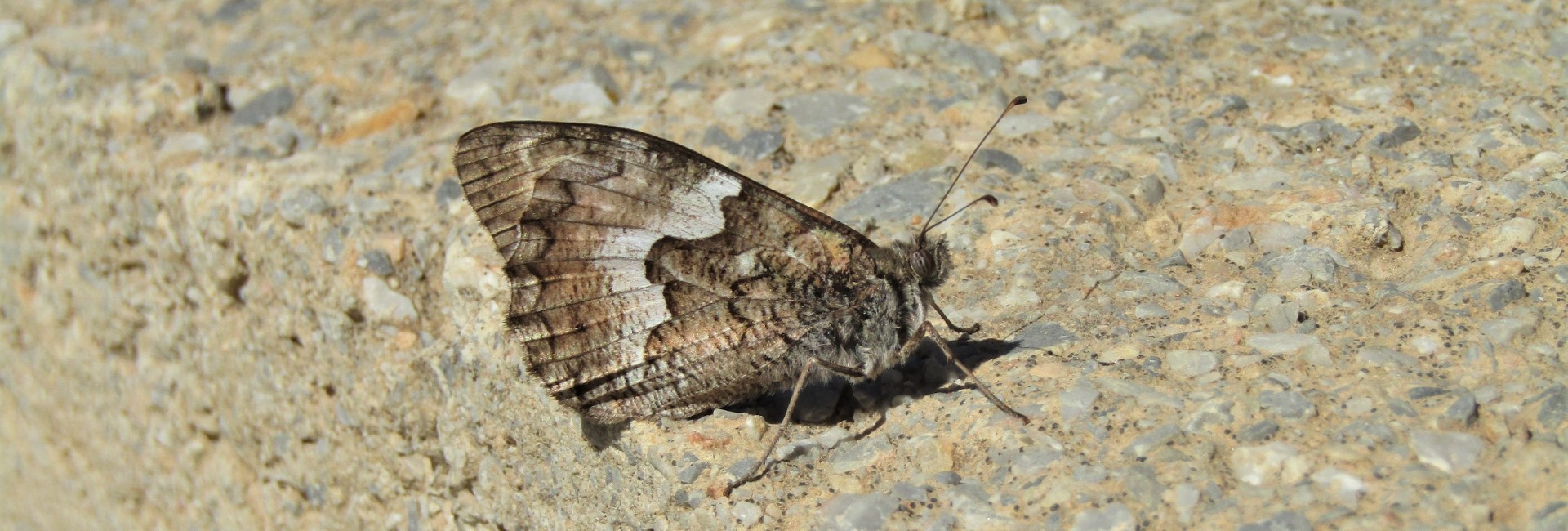
Hipparchia cretica (endemic) - photo © K. Bormpoudaki
Anatomy of a Butterfly
Anatomy of an Adult Butterfly Body
The adult butterfly body is typically organized into three different sections: head, thorax, and abdomen.
- On the head which is the feeding and sensory center, there are a pair of antennae, a pair of compound eyes made up of thousands of ommatidia, each of which senses light and images, a pair of palps, and a proboscis.
- The thorax consists of only three jointed segments, the prothorax, mesothorax, and metathorax, each derives from a primitive segment. In each segment of the thorax, there is a pair of jointed legs. Thorax also bears two pairs of wings, a pair of forewings, and a pair of hindwings.
- The abdomen consists of 10–11 segments tapering to the end. Each segment provides membranes in between allowing for articulation and movement. The external genitalia is placed in the last part of the abdomen.
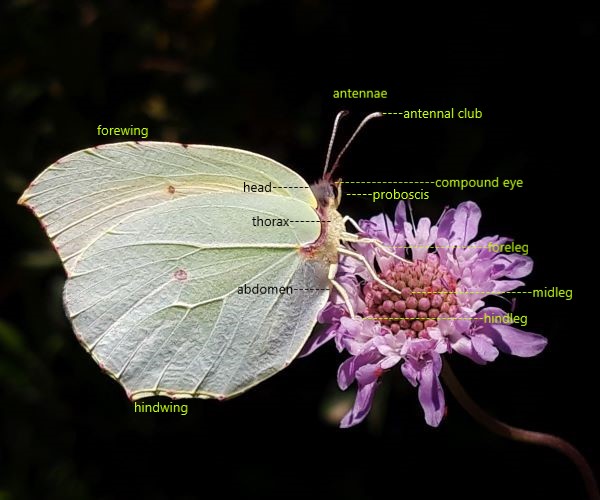
Anatomy of Gonepteryx cleopatra – photo © K. Bormpoudaki
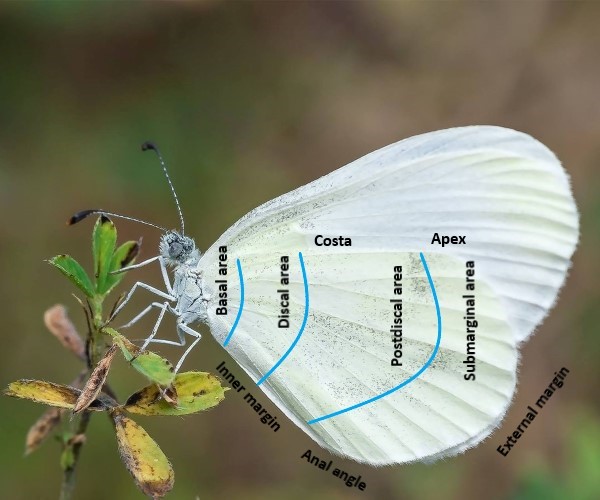
Wings anatomy of Leptidea sinapis – photo © Sofia Apergi
Anatomy of an Adult Butterfly Wing
There are four wings on a butterfly attached to the second and third thoracic segments: two forewings and two hindwings.
A butterfly’s wings are divided into the areas as shown on the left photo: basal area, discal area, postdiscal area, and submarginal area. Another characteristic of the wings is their ribbing, on the basis of which a wing is also mapped in various areas.
The butterfly wings are made of two membranes supported by tubular veins which function in oxygen exchange (“breathing"). Thousands of colorful scales, which are tiny overlapping pieces of chitin, along with many hairs, are covering the wings. Usually, the upper side and the underside of the wings have different patterns.
Anatomy of Larva
The anatomy of a butterfly varies in each stage of its life cycle; there are four distinctive stages of metamorphosis: egg, larva, pupa, and adult.
A caterpillar is the larval stage of butterflies which usually lasts from about 2 weeks to a month, and is the longest life stage for many Lepidoptera. During this stage, the caterpillar can grow in size more than 30,000 times.
Caterpillars have a segmented body consisting of a head, a thorax with three pairs of jointed legs with hooks, and an abdomen, usually with five pairs of stumpy prolegs. At this stage, caterpillars eat and grow fast in preparation for pupating.
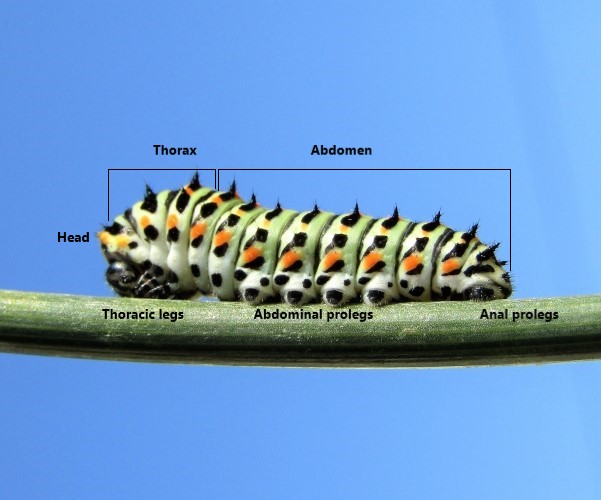
Anatomy of Papilio machaon larva – photo © K. Bormpoudaki
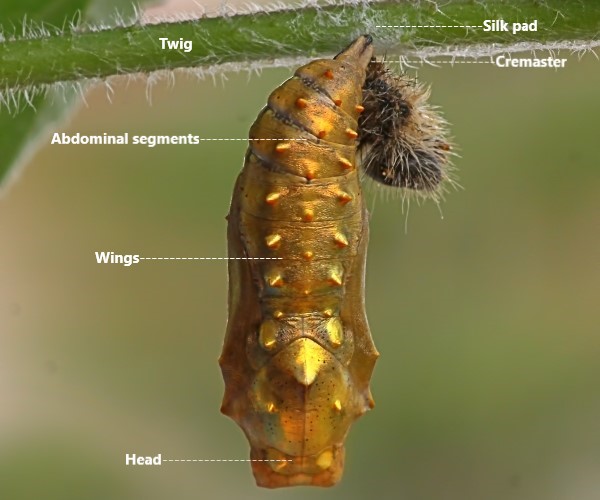
Anatomy of Vanessa cardui pupa – photo © Antonia Aga
Anatomy of Pupa
The duration of pupation during which metamorphosis to the adult occurs varies with temperature. Usually, it is required up to 12 days or several weeks for many species; other species hibernate as pupae, often for 10 months or more (Jerry A. Powell, in Encyclopedia of Insects (Second Edition), 2009).
A cremaster is a support hook or a cluster of small hooks at the abdominal end of a pupa. Some butterflies are supported by only the cremaster; others hook their cremaster into a silk pad spun by the larva just before pupation; it will hang from this until it emerges as an adult. The freshly exposed pupa is very soft and delicate until it hardens.